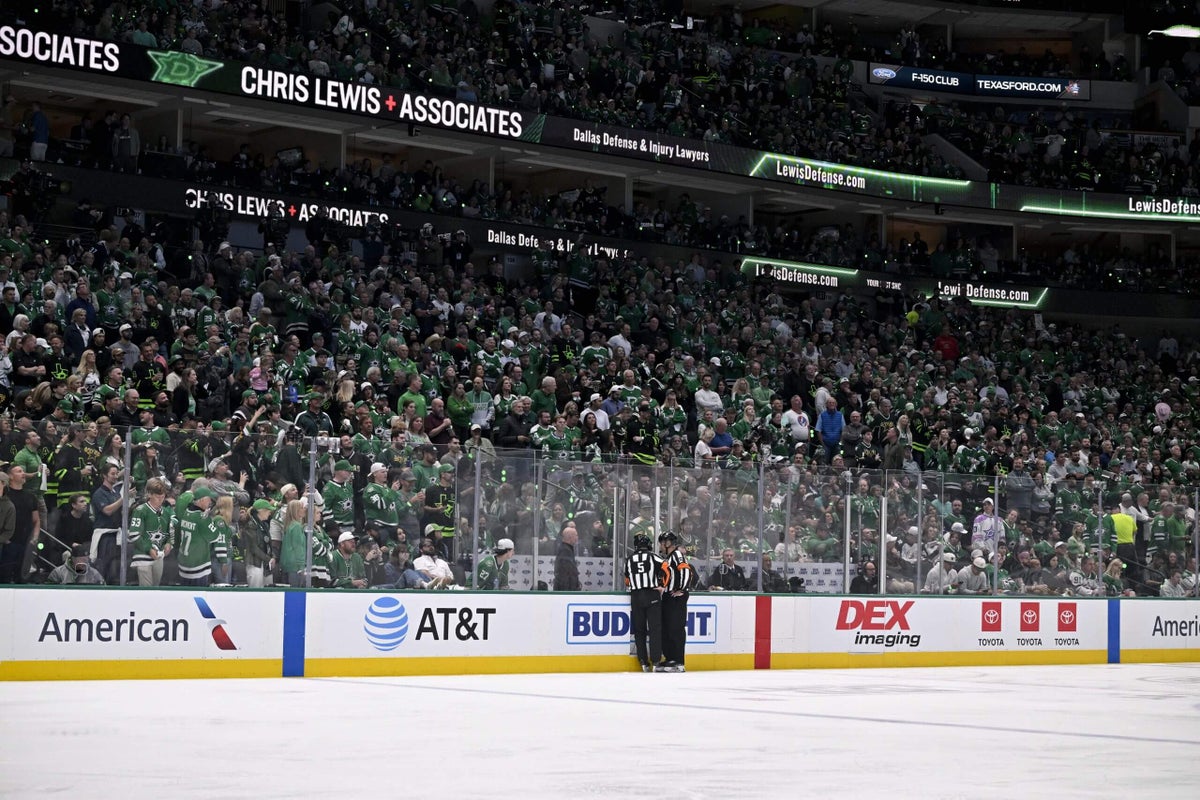

When does a deflection turn into possession of a puck?
Kyle Connor looked, wide-eyed. He didn’t know what to say. The Winnipeg Jets had just let a close Game 3 slip away and given the Dallas Stars a 2-1 lead in their series. But it was a vital question: the Stars’ game-winning goal in Game 3 depended on the answer.
Connor didn’t have it. Neither did Morgan Barron, who deflected it to Jets head coach Scott Arniel. Arniel was unequivocal in his disagreement. The goal that won Game 3 never should have counted. But Alex Petrovic’s goal stood as the game-winner.
“The rule states that if the puck gets kicked, if it hits a body or a stick of anybody else other than the goaltender, it counts as a goal. It hit our goaltender’s stick and went in the net. That is no goal,” Arniel said.
Advertisement
“I’m not sure that’s how the rule reads,” said Stars’ coach Pete DeBoer. “I think the rule reads that if, I believe, the goalie is making a play on the puck, that it’s a goal. So that’s the difference. Is it just deflected off him or is he trying to make a play with the puck? And I think they got it right.”
Petrovic scored it three minutes and 51 seconds into the third period, following up on a Dallas rush by kicking the puck toward the net. The puck struck Connor Hellebuyck’s stick and deflected into the net. It was initially called a goal at ice level.
THE STARS HAVE A GOOD GOAL TO START THE THIRD ⭐️ pic.twitter.com/oZcBGascdx
— Sportsnet (@Sportsnet) May 11, 2025
A video review initiated in Toronto started a lengthy review process — first, to determine whether or not Petrovic had kicked the puck, second, to determine whether or not the puck hit Petrovic’s stick after he kicked it, and third, to determine whether or not Hellebuyck propelled the puck into his own net.
It was called a goal, with this explanation given by the NHL Situation Room:
The Situation Room initiated a video review to further examine if Alexander Petrovic kicked the puck into the Winnipeg net. Video was then used to determine if the puck made contact with Petrovic’s stick prior to it entering the net. After looking at all available replays, video review supported the Referee’s call on the ice that Connor Hellebuyck propelled the puck into his own net.
“They said that Helle ‘propelled’ the puck in. I haven’t seen the word ‘propelled’ in the rulebook,” Arniel said.
If it had been determined that Petrovic had propelled the puck into the net, then the “kicking motion” rules would come into play: The goal would have been disallowed. Instead, the ruling was that Hellebuyck propelled the puck into his net. The kicking motion rules did not apply.
Here are the kicking motion rules, which the NHL deemed inapplicable given their determination that Hellebuyck propelled the puck into his own net.
A puck that deflects into the net off an attacking player’s skate who does not use a distinct kicking motion is a legitimate goal. A puck that is directed into the net by an attacking player’s skate shall be a legitimate goal as long as no distinct kicking motion is evident. The following should clarify deflections following a kicked puck that enters the goal:
-
- A kicked puck that deflects off the body of any player of either team (including the goalkeeper) shall be ruled no goal.
- A kicked puck that deflects off the stick of any player (excluding the goalkeeper’s stick) shall be ruled a good goal.
- A goal will be allowed when an attacking player kicks the puck and the puck deflects off his own stick and then into the net.
-
- A goal will be allowed when a puck enters the goal after deflecting off an attacking player’s skate or deflects off his skate while he is in the process of stopping.
Arniel is right that there is no reference to a goaltender propelling the puck into his own net.
It seems clear in the video that Hellebuyck’s stick does redirect the puck into the net. It’s hard to view the goal as a case where Hellebuyck had enough possession to propel the puck into his net — as opposed to it deflecting off of him and in, as per No. 2 in the rules above.
Advertisement
Then again, if the rule states that a goal should count if the goaltender makes a play at the puck, DeBoer is right.
The NHL’s determination that Hellebuyck propelled the puck into his own net appears to indicate “own goal.”
Rule 79.4 states: “A goal shall be scored if the puck is shot into the goal by a player of the defending side. The player of the attacking side who last touched the puck shall be credited with the goal but no assist shall be awarded.”
Ultimately, that’s the decision the NHL appears to have made — although, if that’s the case, then Mikko Rantanen and Sam Steel’s assists should not apply.
The NHL had a lot to deal with: kicked puck, any number of deflections between Petrovic’s kick and Hellebuyck’s stick, and then the determination that Hellebuyck played the puck into his own net as opposed to it deflecting off of him. It makes sense that they took nearly eight minutes to come to their deliberation.
But when does a deflection turn into Hellebuyck shooting the puck into his own net? It seems like a difficult interpretation to make, by video, in slow motion.
The rest of the game played out quicky: Rantanen scored 49 seconds later, giving the Stars a two-goal lead, and Wyatt Johnston added another before the third period was done and Dallas won 5-2.
(Photo of Graham Skilliter and Chris Rooney reviewing the game-winning goal: Jerome Miron / Imagn Images)
This news was originally published on this post .






Be the first to leave a comment